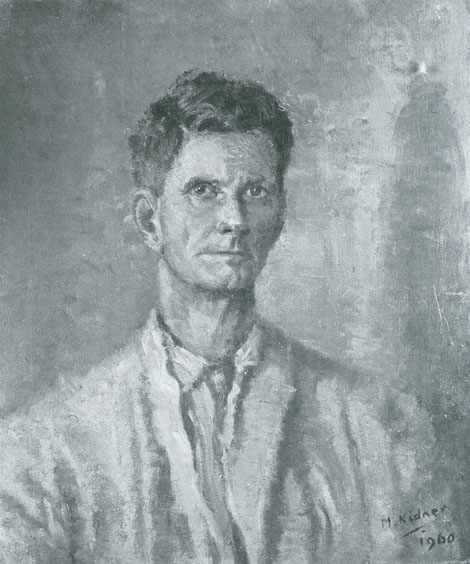
Egerton Martin Kidner, known as Martin, the eldest child of Alfred Egerton and Frances Kidner, was born on 14th March 1915 in Wellington, New Zealand. His father, a consulting engineer, brought his family back to England that year, and Martin was educated at Enfield, and then Colchester, before going to Framlingham College in Suffolk, close to where he would later settle down.
Martin spent a year as a living-in Farm Pupil with his cousin, Alfred Kidner (1880-1976), at Colton in Norfolk, before taking the then National Diploma in Agriculture at Reading University. His plan was to become a farmer on his own account, but the industry was severely depressed and Martin was forced to take a number of farm labouring jobs before being accepted, to his surprise, as a member of a sleeping sickness eradication team in Northern Nigeria. He left Liverpool, aged 22, on the SS Aba on 12th October 1937 bound for Lagos and thus began a relationship with Africa that would endure all his life.
He spent the early part of the war with 3rd Battalion, Nigerian Brigade, fighting the Italians in the Abyssian campaign. In his book Martin is keen to point out the inaccuracies and perceived bias (in favour of the King's African Rifles, drawn from East Africa, at the expense of the West Africans) in W.E. Crosskill's The Two Thousand Mile War. Martin was presented with the Military Cross in recognition of his services in the Babile Pass action in December 1941, when he was serving with the 3rd Battalion, Nigerian Brigade Later he returned to West Africa and accepted an opportunity to confront the Vichy French who occupied the francophone territories surrounding Nigeria. Martin sketched throughout the war - mainly horses and his soldiers - and his family have published his wartime sketch books and other material in his autobiography.
After the war, Martin managed a farm at Loriento in the Kenyan Highlands for three years before moving to the South Kinangop, to the north of Nairobi. He built up a good Ayrshire dairy herd and a flock of 300 sheep. He put down grass leys that were intensively managed in a way not seen in Kenya. It was these pastures that engaged the enthusiastic notice of the Department of Agriculture. Dairy farming was always rather a struggle in that terrain, and in 1955 Martin became Animal Agronomist at the Grassland Research Station at Kitale where he remained for 10 years. This experience led onto consultancy work in many parts of the world finishing up with him leading a four-man team in Jordan. This work resulted in proposals for a rehabilitation programme for the Low Rainfall Area in the mountains to the east of the Dead Sea.
His work as an artist took a more serious turn when, in 1959, he had a portrait accepted for the Annual Exhibition of the Pastel Society in London. When he returned to England in 1965, and bought a cottage in Suffolk, he concentrated on his drawing and painting.
He exhibited at the East African Wildlife Society Headquarters in Nairobi between 1971 and 1973, but ceased to exhibit in Nairobi after that date, recognising that the tourist market demanded not hard-to-pack original paintings, but prints. The British Wildlife Society proved a more sympathetic home. Martin exhibited his work widely, notably in specialist wildlife exhibitions including those with the prestigious Society of Wildlife Artists in London. Other notable shows included his one-man exhibition at the National Art Gallery and Museum in Botswana in 1976 (of fifty-eight paintings exhibited, forty-six were sold within the first hour and a half!); and the one-man shows at the Perouse Gallery in Canberra, Australia in 1978 and 1980. Much of Martin's remaining work is now proudly displayed in the houses of his family.
Martin died in 1984.
*********************************************************************
The life of Egerton Martin Kidner is recorded and celebrated in a book that he wrote for his children and grandchildren. The life and work of Martin Kidner, edited and completed by Josephine Walpole, was published by Baron Publishing in 1984 (ISBN 0 907462 43 X). It is well worth a careful study, and at the time of writing a number of copies are available from abebooks.com.
Last updated on 23rd August 2008
© Estate of Egerton Martin Kidner 2008
